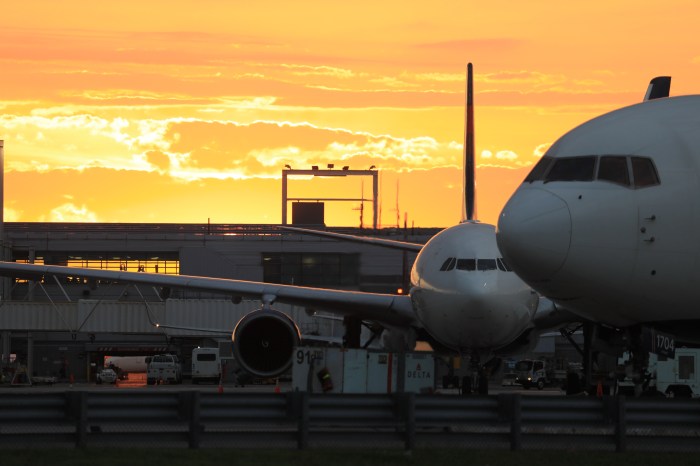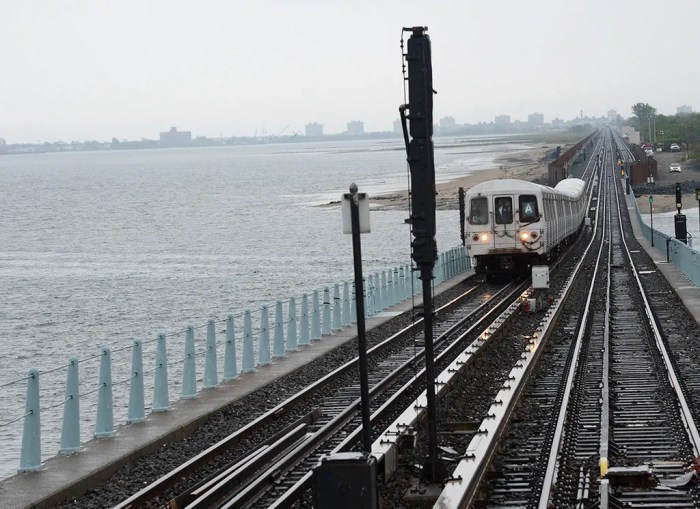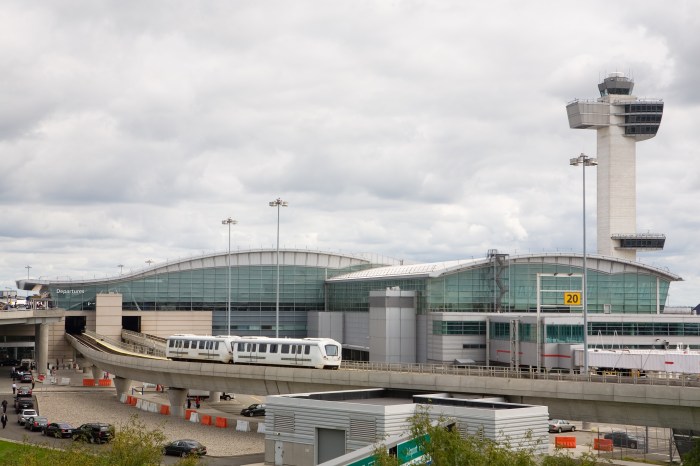By Ivan Pereira
For southeast Queens commuters, dollar vans are a godsend when it comes to their morning commute and the evening rush hour.
Although many live within walking distance of a nearby city bus stop, the riders prefer to have the private vans pick them up at their doorstep and drop them off at another mass transit option, such as a Long Island Rail Road station or the Jamaica Center subway station.
“With the bus, you have to wait a long time and it's slow because you have to stop to pick up people along the way,” said Tawana Spears, 19, a frequent dollar van commuter during a ride home to Jamaica from the subway.
“The dollar van is better because it's cheaper and it goes directly to your place — no stops,” she said.
Spears is not the only one who feels this way. During her trip from Jamaica Center to her home, the $1.50-per-ride van was packed with a dozen other passengers, a common sight within neighborhoods such as south Jamaica, Laurelton and Rosedale.
“Commuter vans have really become an intrinsic part of the communities they service, which are historically either under-served by mass transit or have residents that simply prefer this mode of transportation,” said Matthew W. Daus, commissioner of the city Taxi and Limousine Commission, which regulates the vans along with the city Department of Transportation.
Subway lines stop at Jamaica Avenue and Hillside Avenue, but public bus service is often spotty with long delays and the Long Island Rail Road has just six stops in southeast Queens.
Every day hundreds of residents young and old line up at specific stops just to get to their destination. With higher gas prices, a slowing economy and crowded buses and subways, the service has grown tremendously in the last couple of months, according to van drivers.
“The people will take what is most comfortable for them,” said Martin Johnson, 28, of St. Albans, who drives a van operated by Jamaica-based Apple Courtesy Inc.
Many vans, like Johnson's, offer more than just a cheap and quicker route for commuters. Some play soothing tunes from radio stations like “Lite FM” that soothe the riders during their morning and evening commutes.
“The vans are good because the drivers are friendly and try to accommodate you,” said a Rosedale commuter on Johnson's van who did not want to disclose her name.
The emergence of the dollar van industry dates back to 1980, when Metropolitan Transportation Authority subway workers went on strike, according to the state Department of Transportation, which originally regulated the service. Businesses hired the private transporters to help their employees get to work from their homes in the outer boroughs.
After the strike ended, many of the riders stuck with the vans for their convenience and told their friends and family about the advantages. As of 2007 the TLC had officially licensed 233 vans operated by 186 companies across the city. A group of 206 drivers is licensed to drive those vehicles day in and day out, according to the TLC.
A van may be smaller than a normal city bus — some riders' heads touch a van's ceiling — and the seating arrangements keep everyone close together. But for all the tight conditions, riders keep to themselves and barely talk.
Johnson said that, too, makes the experience better.
“Most of the people who come in just want to go home, so they're not always chatty, but that's good,” he said. “On buses, you get the kids who talk and curse and it's annoying.”
In his 10 years as a driver, Johnson said he has seen the service grow more popular among residents. On an average day, he said he picks up everyone from construction workers to business people and even MTA bus and subway operators.
Despite these advantages, Johnson and southeast Queens residents said there were a lot of people who had their doubts about the vans when the service first rolled out, but Johnson said he and his fellow drivers were reliable.
Each driver must get not only a certified state taxi license but also a commercial vehicle license as well, according to the TLC. Their vans must be registered with the city DOT and the vehicles inspected every six months by the state DOT.
“You'd be surprised with the qualifications you have to go through to drive this,” Johnson said, as he continued his route from Rosedale to Jamaica Center. “The criteria are almost the same as the MTA.”
Many riders like Spears said she and most of her neighbors cannot afford to wait nearly an hour for their local bus, which is usually overcrowded, to pick her up and take her to the subway.
“It's usually the older people that take the bus because they are used to it. Everybody else will wait on the line for the dollar van because it's on time and always has a seat,” Spears said.
U.S. Census data shows Queens residents have the longest average commute in 231 of the nation's largest counties with an average of 41.7 minutes of travel time. A study by the Permanent Citizens Advisory Committee to the MTA this year found express buses that take southeast Queens residents to the subway in downtown Jamaica are hindered by tight traffic and add heavily to commuting times.
Infrequent bus service came up in February when the city considered using money from its failed congestion pricing plan to increase bus service in southeast Queens .
Nevertheless, dollar van drivers had no worries about the future of their industry, because the inconvenience of buses and the high cost of taxis have made dollar van a viable option to get around the borough and to more efficient train service.
“A lot of drivers thought the MetroCard was going to hurt us, but in the end people bought the MetroCard and used the vans to get to the subway,” Johnson said.
Daus, the TLC commissioner, agreed and said the vans are more popular with immigrant residents. For people who came from countries in the Caribbean and South America, the dollar van gives them a means to retain their familiar customs in their new home, according to Daus.
“For many riders, commuter vans are also the local equivalent of similar services that are popular in other countries, so there is a cultural connection as well,” he said.
No matter what their reasons are, riders said they expect more people to take to the vans in the future as a better transit alternative.
“People are always going to go for what's less and what gets you there the best,” Spears said as she arrived at her residence after her 15-minute, one-stop ride.


































